Once one of England and Europe’s deadliest teams, Chelsea now find themselves struggling to get out of mid-table.
They shocked many fans last season by finishing 12th in the Premier League despite a defensive record that was far from terrible.
One of their major issues last season was their attacking output, scoring just 38 goals – and they’ve carried those attacking struggles into this campaign despite enlisting the managerial services of Mauricio Pochettino.
While their defensive record is not helping them this season, conceding 22 goals in 14 games, this scout report will provide a tactical analysis of the Blues’ attacking struggles.
The analysis will look to pinpoint why Chelsea are failing to perform consistently in attack despite spending big on new signings in the summer under a manager renowned for getting the best out of players.
The area we will be highlighting is Chelsea’s struggle to consistently create chances from wide areas despite having talented players in those areas.
The goals so far – a statistical review
Let’s not get it mixed up; Chelsea have not been woeful in attack this season by any stretch of the imagination.
Scoring 25 goals in 14 games is not to be frowned upon, but it’s not the kind of scoring form that will help them climb back up towards the UEFA Champions League spots.
In fact, seven teams in the Prem have outscored the Blues, but Poch’s side have shown signs of life, especially in the last few weeks – scoring four goals against the likes of Spurs and Manchester City.
Still, Chelsea’s attacking play lacks a certain edge and tactical direction week-to-week – more often than not, they rely on set pieces and individual moments to bring the goals in.
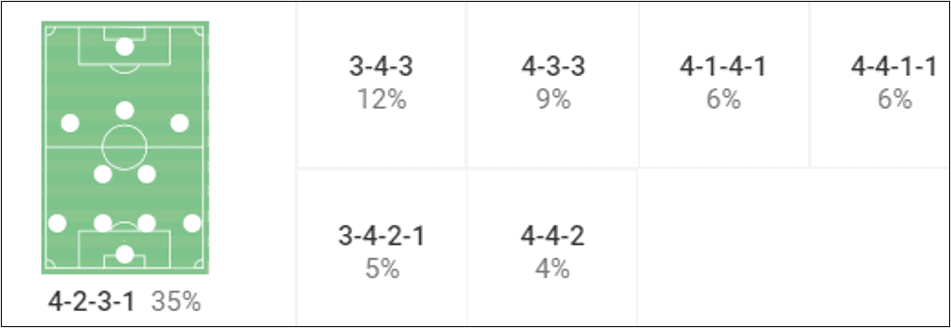
4-2-3-1 has been Pochettino’s formation of choice so far – an understandable selection given the players he has at his disposal.
On paper, Chelsea have a strong midfield unit, from the deeper midfield duo of Moises Caicedo and Enzo Fernández to the attacking options in Cole Palmer, Raheem Sterling, Conor Gallagher, and more.
New signing Nicholas Jackson is often the man leading the line, and it is fair to say he’s had a mixed beginning to life in the Premier League.
Questions about his technical ability and tactical IQ continue to linger, but six goals in 13 games is not awful for a forward adapting to a new side.
He is, however, underperforming his xG of 8.23, which is the second-highest in the league, so he would be expected to be netting more goals than he currently is.
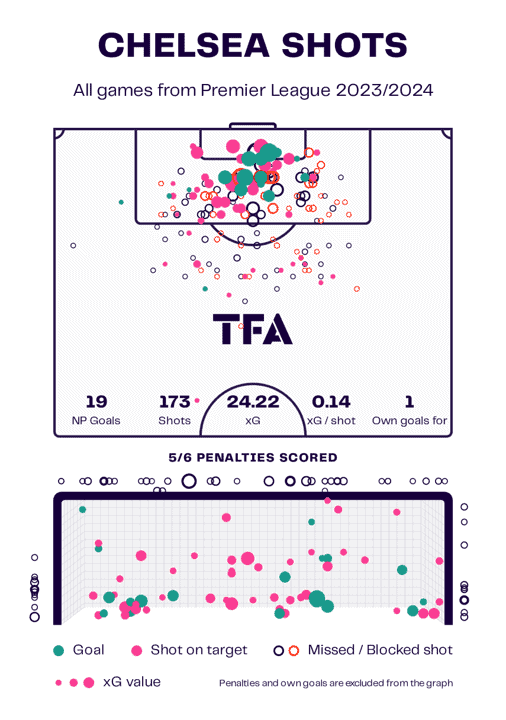
When looking at the various rankings for attacking statistics in the Premier League, Chelsea don’t excel anywhere in comparison to other teams.
They’re experiencing an xG underperformance of almost four goals and have only scored 19 non-penalty goals in the league this season.
And when you dig deeper, there isn’t much to suggest that they are just unlucky; instead, you’d find evidence to suggest a real attacking struggle and inconsistency.
Reaching the box isn’t a significant struggle, though, judging by their average of 22.73 touches in the box per 90 (sixth-highest in EPL), but they manage just 11.15 shots per 90, the 10th highest (or lowest, depending on your philosophical bend) in the EPL.
Breaking down the 25 goals, we get an even clearer idea of the current state of Chelsea’s attacking identity with further questions about their tactics.
Of the 25, 10 goals (40%) were scored in phases where Chelsea had built an attack from controlled possession, five (20%) came as a result of an attacking transition/counterattack, five (20%) have been from set-pieces with an additional five (20%) goals from penalties.
Chance creation from wide areas
Chelsea currently rank sixth in the league for possession, averaging 55.3% per game, displaying the ability to control the game regularly.
What they seem to have difficulty with is consistently turning that possession into dangerous attacks, which we will look at in this scout report using various data as well as match images.
Pochettino has an abundance of technical talent in wide areas at his disposal, so Chelsea could seriously look into utilising crosses more often and find a way to be more successful with them.
At the time of writing, the Blues rank eight in the league for cross attempts (13.58 per 90) but sit rock bottom in the rankings for cross accuracy (25.2%)
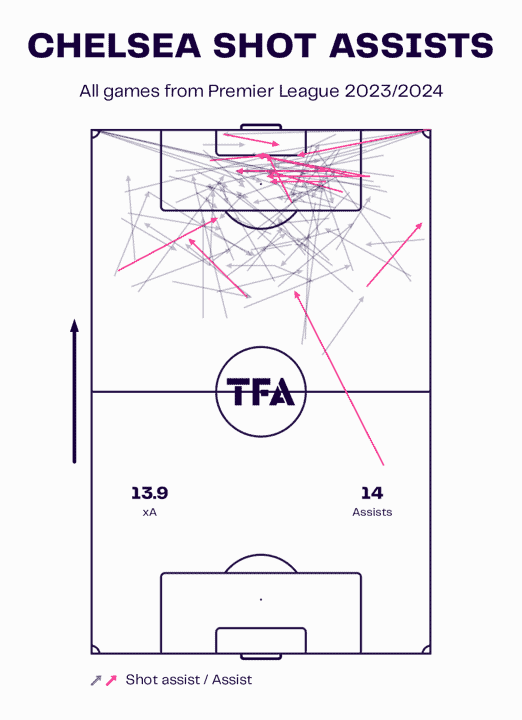
This visualised data gives us more indication that Chelsea can improve when it comes to creating chances from wide areas.
Outside of corners, of which they have scored from four times (joint second in the league), they have very few assists from the flanks – they have set one goal up from a deeper position on the left flank while from the right flank, despite having created far more opportunities, there is still room for improvement, which we will get to later.
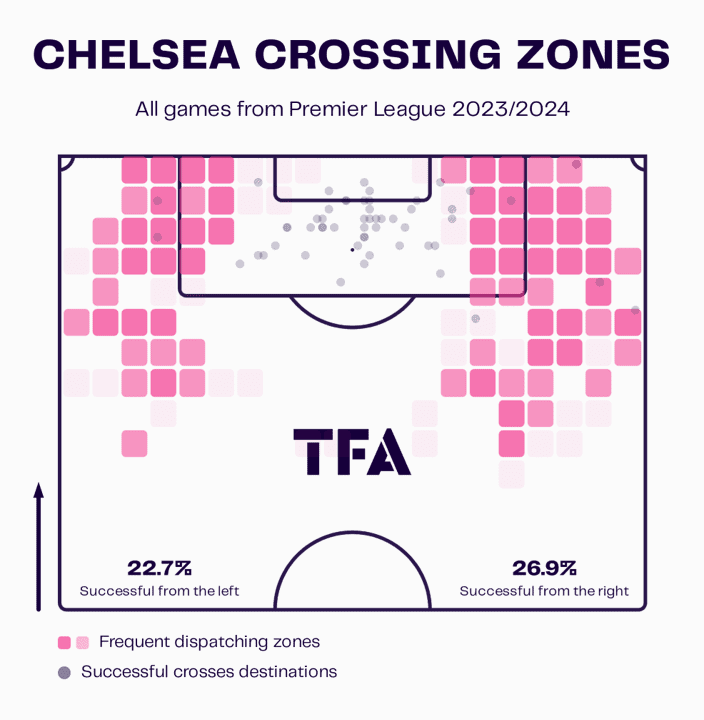
Understanding their crossing frequency on both flanks gives us more into Chelsea’s tactics regarding which flank they target.
As we touched upon before, based on their shot assists, they attack the right flank more frequently than the left.
This is likely a tactical decision based on the patterns they have worked on during training.
Their lineup has experienced some variation regarding the three attacking midfielders.
Cole Palmer and Conor Gallagher have both shared the central responsibility, although Palmer has played on the right flank, too.
Raheem Sterling also offers a similar versatility as the former Liverpool man has played on either flank – he tends to play on the left unless Mykhailo Mudryk starts, in which case Sterling will play on the right.
Finally, it is worth noting that their success rate from both flanks is far less than satisfactory, which you would expect from the least accurate crosses in the Premier League.
Ranking eight for cross attempts but bottom for accuracy suggests that crossing is an important part of their attacking tactics, but they haven’t yet found the key to making them work.
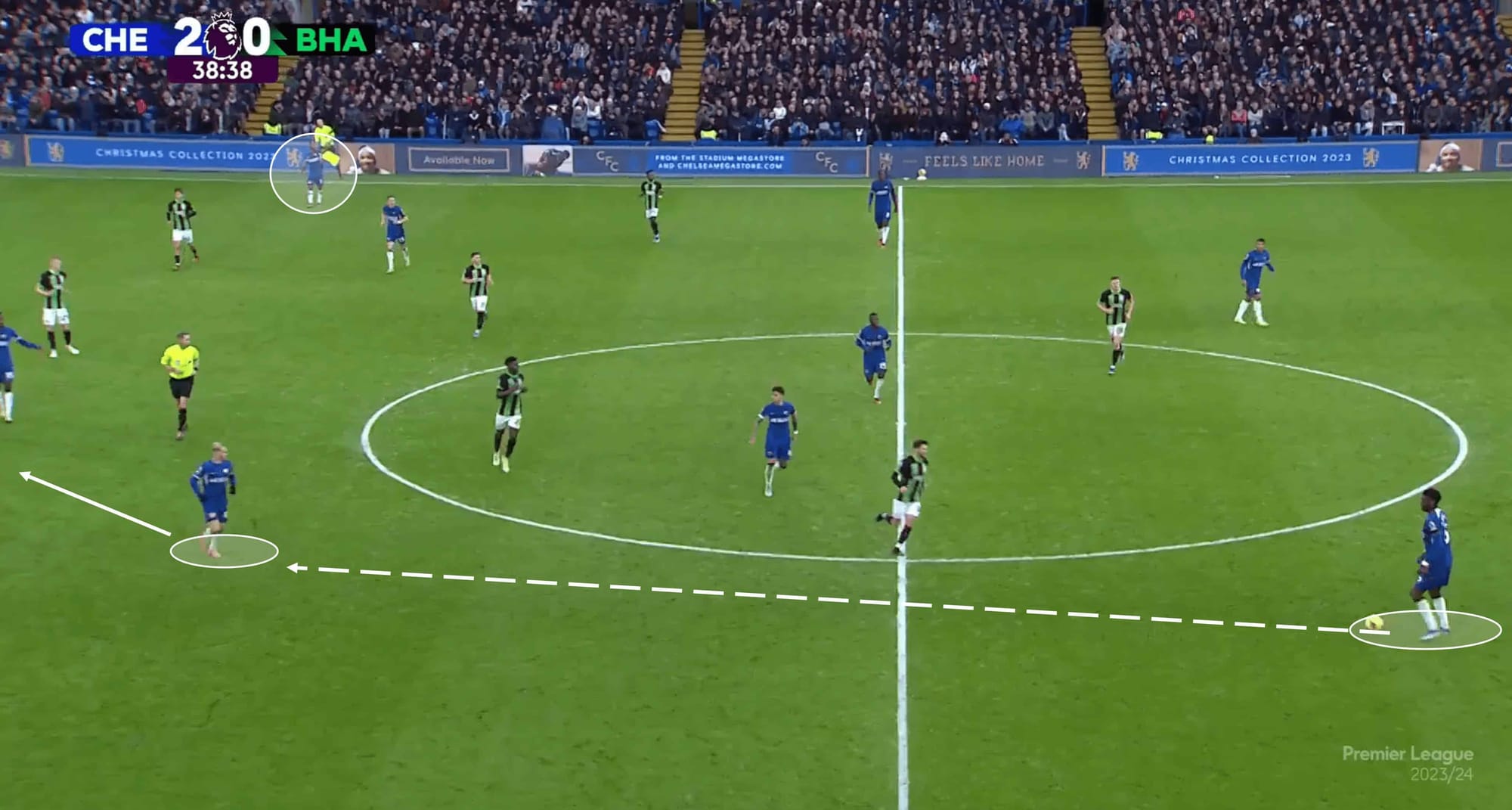
This image is a reflection of what we just discussed re: Chelsea favouring the right flank for attacks in the final third.
Mudryk has shown a tendency to drift inside if the space is available, where he can receive the ball and drive forward at speed, something he has shown plenty of promise with.
This isn’t to say he never stays wide to collect the ball, just that his tendency to drift inside is a contributing factor to Chelsea’s lower attacking frequency on the left.
Sterling’s positioning on the opposite flank is noteworthy – the England international likes to stay wide when his side are in possession, looking to get involved later in the attack.
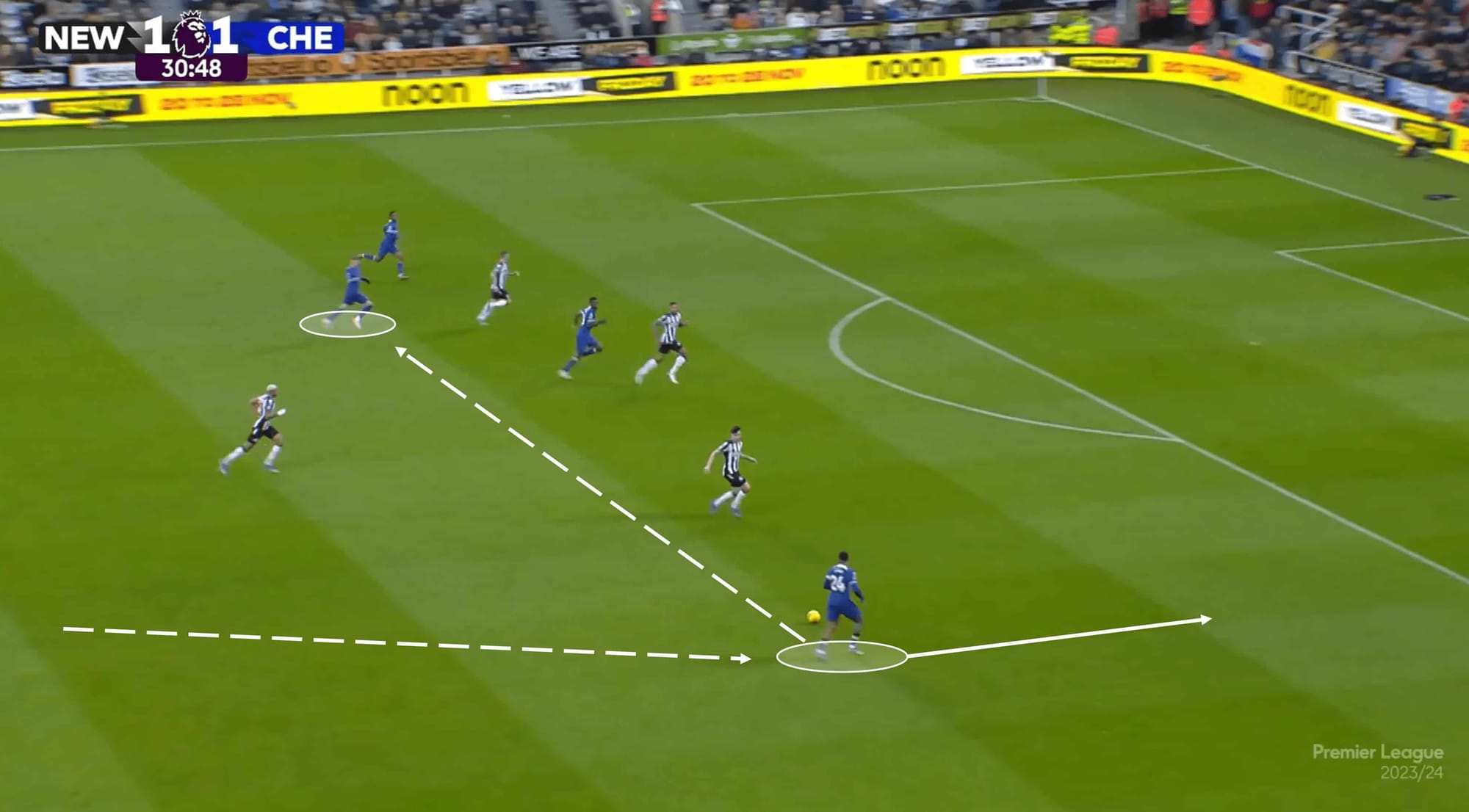
The purpose of this segment is not to say, “Chelsea should have done this instead of that”, but instead to provide examples of their attacking play that suggest a lack of interest in utilising the full pitch width and crosses.
Pochettino’s men showed that in the example above – Reece James had a fantastic opportunity to collect the ball and drive forward into the box before crossing the ball, but instead, he fired a quick pass into Palmer in a central area.
This was likely due to tactics, as Chelsea likes to utilise passing combinations and clever off-the-ball movements to break the opposition down.
Palmer receiving the ball in that central area had the potential of a three-versus-two encounter.
How can they unlock this potential?
We aren’t saying that Chelsea’s poor performance from wide areas is the only, or biggest, issue they have in attack, but it is a clear area for improvement and one that, if they can rectify, could become one of their most dangerous assets.
Here, we will look at how Chelsea can use the flanks to their advantage more often and highlight the players that could, and already have, done damage in attack.
The idea here is to provide a wide attacking solution that could hypothetically be incorporated into Chelsea’s tactics.
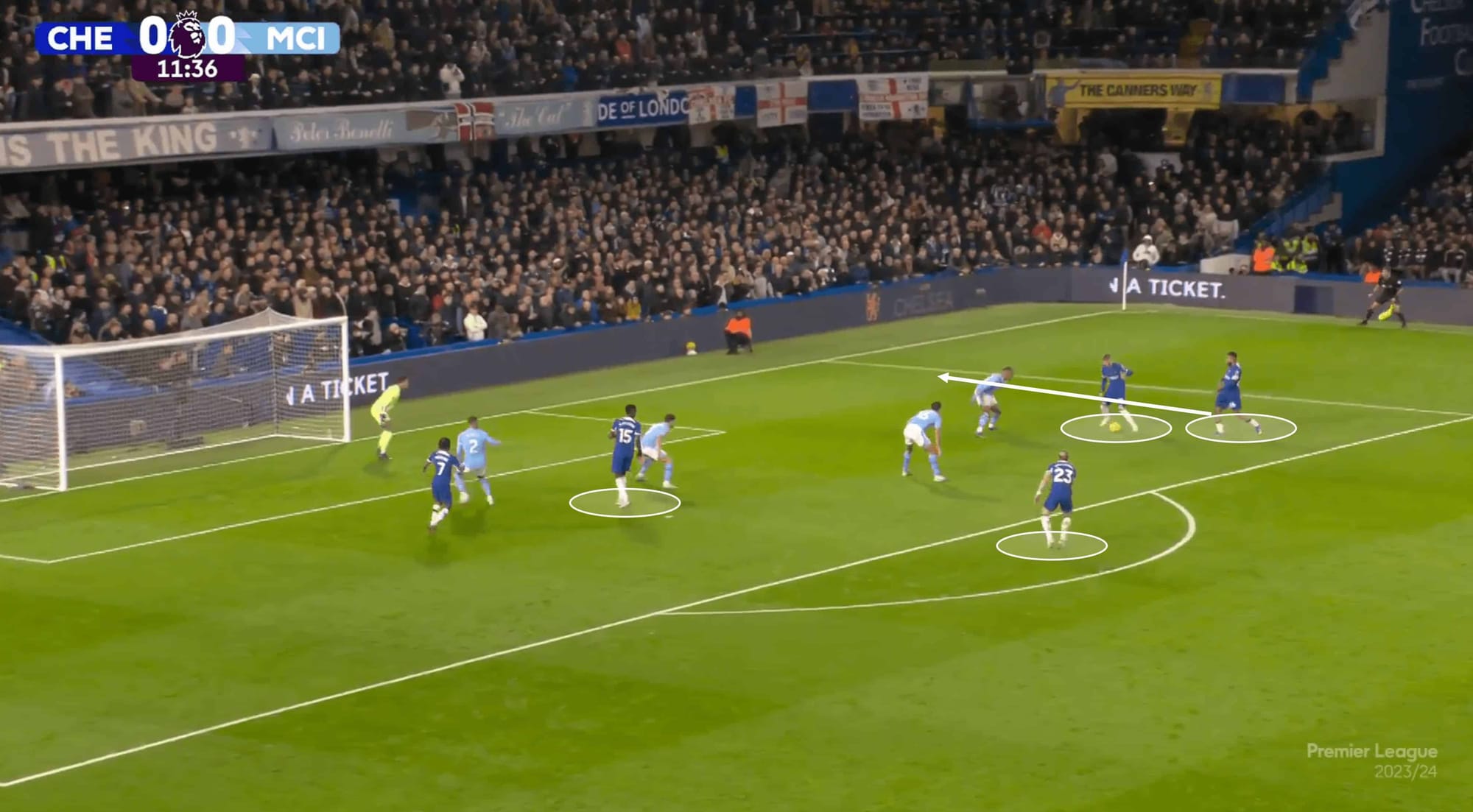
Decision-making is a crucial aspect of a team’s attack at any level of the game, and in numerous instances this season, Chelsea have lacked that on an individual basis in critical moments.
There are plenty of examples of the Blues opting for a shot on goal from an unlikely angle or distance when there were arguably better options available, just as we see in the image above.
Mudryk had Gallagher in a good supporting position at the edge of the box, James making a well-timed overlapping run toward the byline and Jackson in the box, who offers a physical presence.
However, the Ukrainian ignored those options and took a shot at goal, which resulted in nothing positive for Chelsea.
Better decision-making here could have given Chelsea a better chance on goal.
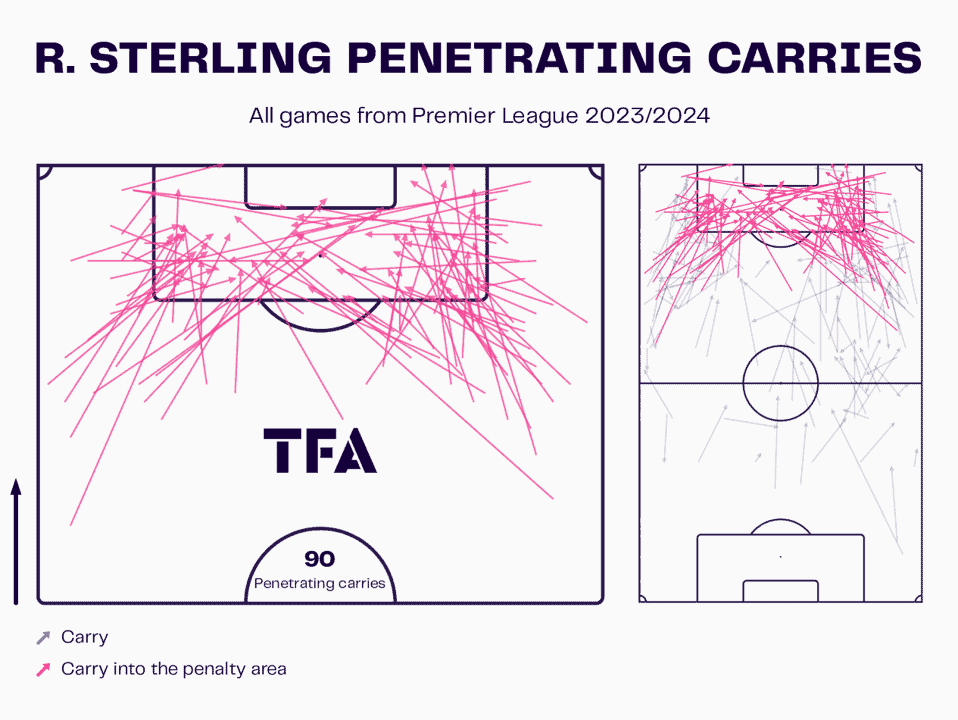
Tactics work best when they are tailored to your players’ strengths, allowing them to bring their best qualities to the forefront of a game.
Raheem Sterling is still a dangerous attacking player and has the speed and technical quality to dribble past defenders in the final third, doing this on either flank.
As you can see from the visual above, he rarely runs straight down the flank as a more traditional winger would.
Instead, Sterling likes to drive towards, and often inside, the box before unleashing a shot or a cross.
We mention this as his ability on the ball means he can turn simple & comfortable possession into a dangerous opportunity in the final third, but the final product rarely follows suit.
While this can sometimes be down to the quality of the cross from Sterling, there is often a lack of movement in the box and also a lack of tactical identity in that there seems to be no attacking patterns, no pre-planned movements or runs: those in the box appear to just wait for the cross and hope the ball comes to them.
We mentioned the quality of crossing just then.
In general, Chelsea would benefit from working on crossing more in training and/or recruiting players with strong crossing ability.
Too many times this season, Chelsea have looked to get the ball into the box, but the quality of the cross has been nowhere near the required standard, so they rank bottom in the league for cross accuracy.
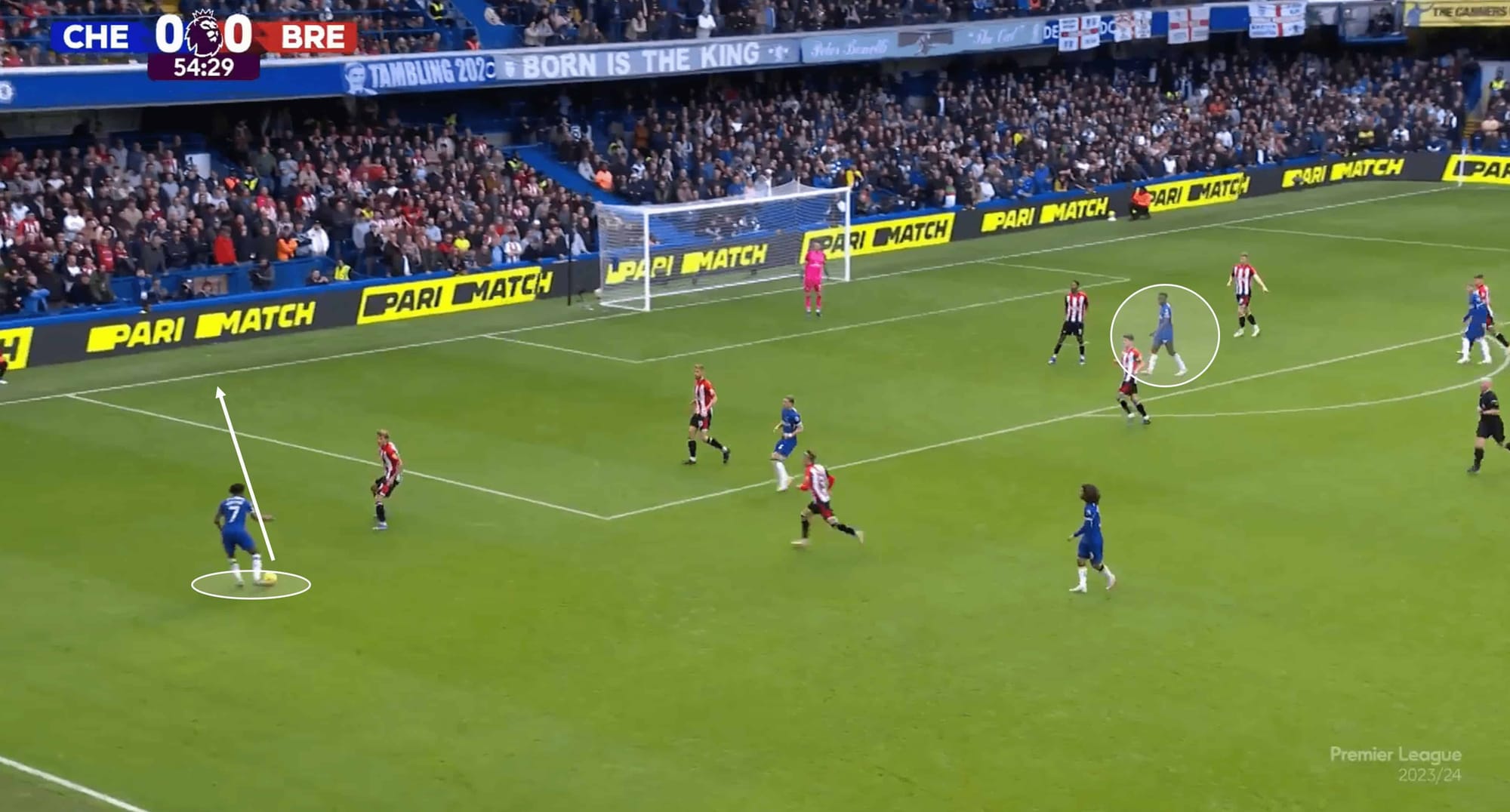
This last image encapsulates the points discussed so far in this segment.
Sterling has proven over the years that he has the ability to create goals from a variety of crosses, but, as you see in the image above, he (and other Chelsea wingers/creative players) are limited in this way, often due to the aforementioned lack of movement in the box.
No, we don’t expect Jackson to miraculously find himself free in the box, but his body language tells the story – instead of being on his toes, anticipating a cross, looking to gain a yard on his marker or peel away, he is walking (don’t show this to Roy Keane!).
What difference does that make? Well, just imagine Jackson providing some proactive movement, giving his marker something to think about, getting himself into a position where he could attack a cross – Sterling could set the ball up to cross the ball in from that very spot with his right foot for Jackson to attack.
Sterling, recognising that this move is not an option, utilises his trademark trait of running past the defender toward the byline before crossing; that last part is something Chelsea wide players do a lot.
Crossing from the byline can be very effective, but Chelsea would benefit from two major factors here – higher crossing quality and variety in crosses.
What are the takeaway points to improve Chelsea’s wide attacking problem? Improved movement in the box from attackers to support the wide players, decision-making in key moments, awareness of the situation and environment, and using the key strengths of attacking players to shape rehearsed attacking plays.
If they wanted to go one further, Pochettino may look at shuffling the deck in midfield in terms of player roles, perhaps to a system that allows for a stronger, more consistent link-up between the wide men and central players (LCM linking with LW, for example.) Their injury problems have been well-documented, so the return of injured players will likely result in a stronger attacking performance and would also give Poch the chance to tweak areas of concern.
Conclusion
Of course, Jackson alone is not at fault for Chelsea’s struggles from crosses and wide attacks – several Chelsea individuals just need to tweak small details: Jackson’s movement in the box, Mudryk’s decision-making, etc.
Tactically, working on attacking patterns from wide areas and rehearsing in-the-box movements from crossing areas would go a long way – whether Jackson has the aerial quality or not would influence the primary type of cross to use.
And, of course, there are other areas the Blues could develop to improve their attacking output, but we have pinpointed some weaknesses, tactical and individual, in their wide attacking play, along with some minor tweaks.

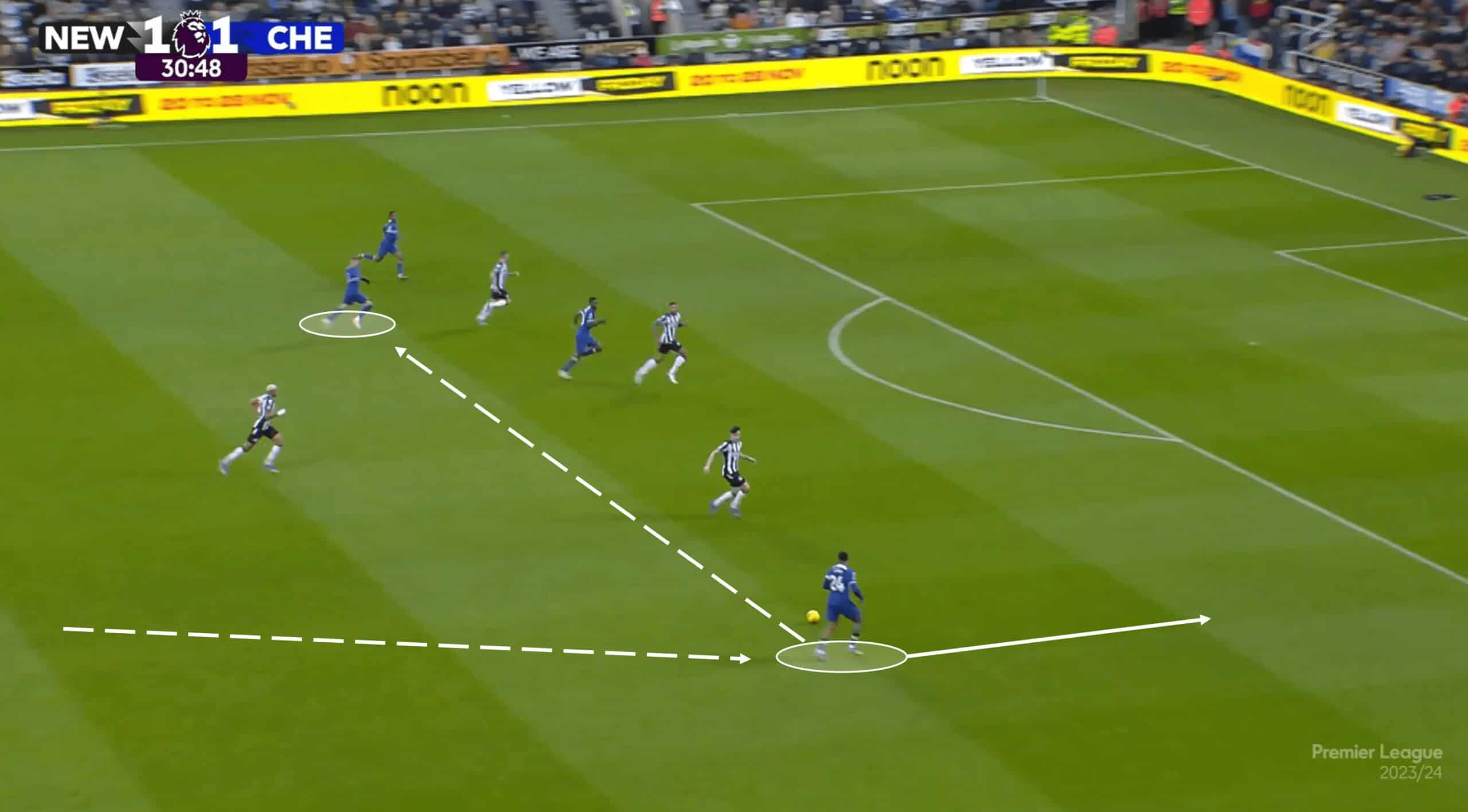




Comments